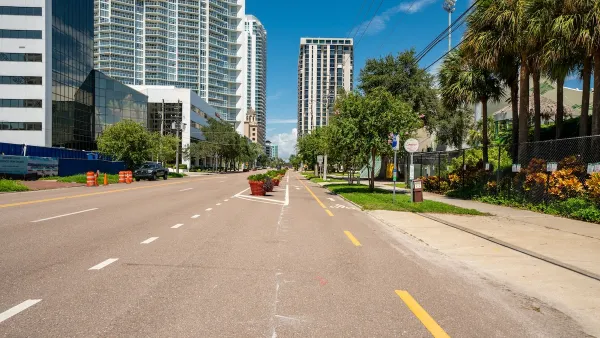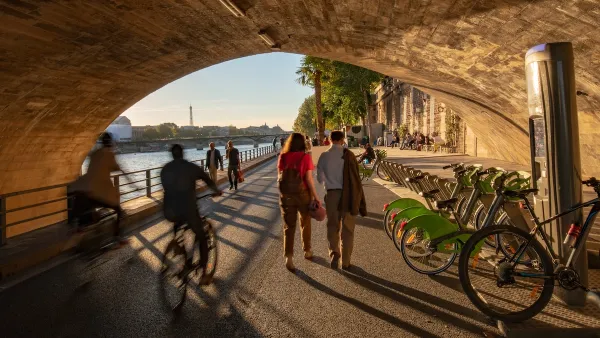Next American City talks with urban designer and bicycle planner Mike Lydon about cycling, ciclovias, and open streets.
Lydon is the Founding Principal of The Street Plans Collaborative, an urban planning, advocacy and design firm, and is also a blooger on Planetizen Interchange.
"City / Culture: You've compiled a timeline that shows when different North American cities adapted open streets initiatives. The timeline shows 35 cities and one state (Kentucky) having added events since 2008, as compared to seven cities from 1970-2007. What changed?
Mike Lydon: There are lots of converging issues. One, the repopulating of cities, and the desire of people interested in living in cities to make them more livable. There's a whole public health side of things – getting more active and healthy walking and biking opportunities plays into that. You see community activists reclaiming the streets from automobiles, making them more multi-purpose, so they can meet more needs.
When a city starts setting a new precedent for an exciting and very significant solution to a problem, a lot of cities tend to follow. We call those early cities, "pattern cities." Bogotá is a pattern city in South America, and other cities follow suit, and that wisdom filtered up to North America. Now you see many more overt efforts and intents to integrate bicycling and walking into initiatives throughout North American cities."
FULL STORY: City / Culture: A Bike + Planning Conversation with Mike Lydon

National Parks Layoffs Will Cause Communities to Lose Billions
Thousands of essential park workers were laid off this week, just before the busy spring break season.

Retro-silient?: America’s First “Eco-burb,” The Woodlands Turns 50
A master-planned community north of Houston offers lessons on green infrastructure and resilient design, but falls short of its founder’s lofty affordability and walkability goals.

Delivering for America Plan Will Downgrade Mail Service in at Least 49.5 Percent of Zip Codes
Republican and Democrat lawmakers criticize the plan for its disproportionate negative impact on rural communities.

Test News Post 1
This is a summary

Test News Headline 46
Test for the image on the front page.

Balancing Bombs and Butterflies: How the National Guard Protects a Rare Species
The National Guard at Fort Indiantown Gap uses GIS technology and land management strategies to balance military training with conservation efforts, ensuring the survival of the rare eastern regal fritillary butterfly.
Urban Design for Planners 1: Software Tools
This six-course series explores essential urban design concepts using open source software and equips planners with the tools they need to participate fully in the urban design process.
Planning for Universal Design
Learn the tools for implementing Universal Design in planning regulations.
EMC Planning Group, Inc.
Planetizen
Planetizen
Mpact (formerly Rail~Volution)
Great Falls Development Authority, Inc.
HUDs Office of Policy Development and Research
NYU Wagner Graduate School of Public Service





























